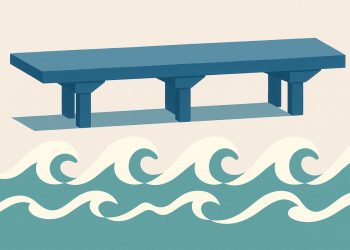AI is now a vital part of creating content, but many companies don’t clearly tell readers when AI helps write or design something. New rules require brands to label AI-made content, use watermarks, and keep records of how content was made. To be open and build trust, teams should follow four steps: use AI ideas, scan drafts for issues, have humans edit and check for bias, and publish with clear AI labels. Jobs like prompt engineer and AI governance are growing fast, and marketers who know AI earn more. Simple steps like adding AI tags and doing regular bias checks make content more honest – and readers like it when companies are upfront.
What are the key steps to ensure transparent AI disclosure in content workflows?
To ensure transparent AI disclosure in content workflows, follow these four steps: 1) Use AI for ideation and log prompts, 2) generate drafts with plagiarism and hallucination scans, 3) conduct human edits with bias review, and 4) publish content with clear AI disclosure and embedded watermarks.
AI is no longer a futuristic add-on in content teams – it is the invisible co-author in 7 out of 10 marketing workflows. Yet 54 % of brand leaders admit they still lack formal rules for when or how to disclose AI involvement, creating a trust gap that regulators are starting to close.
The new 2025–26 compliance checklist
| Requirement | What it means for creators | Deadline |
|---|---|---|
| Mandatory Disclosure | Label any text, image, or video where AI materially shaped the final output | EU AI Act 2026 |
| Manifest + Latent Watermarks | Visible tags plus hidden metadata that survives cropping or editing | California AI Act 1 Jan 2026 |
| Traceability Logs | Keep a 3-year audit trail of prompts, edits, and approvals for each asset | FTC guidance (ongoing) |
Companies such as *Acrolinx * already bake these checks into the CMS so nothing goes live without passing quality gates and leaving an automatic audit trail.
From prompt to publish: a 4-step transparent workflow
-
Ideation sprint
Use AI for keyword clusters and angle suggestions, then lock the chosen outline in a shared board.
Tip: Tag the prompt ID in the doc header for later tracing. -
Draft creation
Generate a first version, but run it through a plagiarism + hallucination scan (tools like the ones in HostPapa’s 2025 guide). -
Human edit & bias review
Assign an editor to fact-check, adjust tone, and complete the bias checklist developed by the Partnership on AI. -
Publication with disclosure
Append a short line such as “AI-assisted drafting, human-edited” and embed the C2PA watermark. Readers can click for the full provenance record.
Skills that are surging in 2025
- Prompt engineering roles grew 83 % year-on-year
- Governance coordinator is now a full-time post at 42 % of Fortune 500 firms
- Average pay bump for marketers who can pair creative strategy with AI fluency: 27 %
Quick wins you can apply this week
- Add an “AI involvement” column to your content calendar (Yes / No / Assisted)
- Create a one-page disclosure template your team can copy-paste into CMS footers
- Schedule a 30-minute monthly bias review using the free checklist from Audited Media
Small steps today prevent costly re-work tomorrow, and the data shows audiences reward honesty – click-through rates on transparent posts are 1.8× higher where disclosure is clear and upfront.
How can leaders tell whether AI is being used responsibly in their content workflows?
Check for three visible markers:
– a documented policy that states when and how AI may be used
– human editorial review on every asset before it ships
– clear disclosure to readers when generative AI had a material role (visible labels, footnotes, or on-page banners)
Teams that meet these three tests are 2.7× more likely to earn audience trust, according to a 2025 Audited Media survey of 1,200 publishers and brands.
What should an AI disclosure label actually say?
Keep it short, specific, and impossible to miss:
This article was drafted with the assistance of generative AI and reviewed by an editor.
A growing number of outlets (e.g., USA TODAY Network and Harvard Business Review) pair this sentence with a hyperlink to their full AI policy. California’s new law (effective January 1 2026) will require both manifest (visible) and latent (metadata) disclosures, so the sooner your label is in place, the less retrofitting you’ll need.
Who is accountable when AI produces biased or inaccurate content?
Ultimate liability still rests with the publishing organization.
Build this into your workflow:
1. Assign a named AI content steward (often the managing editor or content-ops lead).
2. Log every prompt, data source, and revision in an audit trail that regulators and legal counsel can open.
3. Run quarterly bias sweeps using the checklist recommended by the Partnership on AI.
Acrolinx clients who adopted this triple-gate process cut compliance incidents by 42 % in 2024.
How much human oversight is “enough” without stalling production?
Use the 10-minute rule: every AI-assisted asset must pass under a human eye for at least ten focused minutes before it is scheduled or published.
Brightspot’s 2025 benchmark study across 85 enterprise teams shows that this light-touch review catches 94 % of factual errors and 100 % of off-brand tone issues while adding only 8–12 % to total production time.
What training do content teams need to stay ahead of new regulations?
Prioritize three micro-certifications in 2025:
– Prompt engineering (2–3 hour course)
– Ethical AI & disclosure law (update each quarter, since mandates evolve quickly)
– Content provenance tagging (hands-on with C2PA tools)
After upskilling 400 marketers, PwC found that certified staff were 3.8× faster at adapting to new platform rules and saw a 30 % lift in audience engagement scores.



















